How to Clear System Data Storage on a Mac
Ever peeked at your Mac’s storage and wondered, “What’s all this ‘system data,’ and why is it hogging so much space?” Many Mac users find themselves puzzled by how quickly storage can fill up, often with data that’s not immediately visible or understandable. This guide is here to explain that hidden world, offering clear and easy ways to clean up your Mac and keep it running like a dream.
What’s in System Data on Your Mac?
Ever wondered what’s taking up space on your Mac? A lot of it is something called system data. This isn’t just one thing but a mix of files your Mac needs to work right. Let’s break down what’s inside and how knowing about it can help you clean mac system storage.
Here’s what makes up system data:
- Cache Files: These are like memory shortcuts your apps use to open faster. Think of them as quick notes an app takes to remember things.
- System Logs: These are like a diary for your Mac. It writes down what it does, which helps find out why something went wrong when it does.
- Temporary Files: Just like it sounds, these are files your Mac only needs for a little while. They should go away on their own, but sometimes they stick around.
- App Support Files: These files help your apps remember your settings and other personal touches, so you don’t have to set things up every time.
Keeping your system data in check is good for your Mac. It can make your Mac faster and give you more room for your stuff. And if you’re wondering how to clear system data on mac, don’t worry. In the next section, we’ll walk you through some straightforward ways to tidy up and reclaim space on your Mac. Just a heads-up: always double-check before you delete anything to keep what’s important safe.
5 Methods to Clear System Data on Mac
Ready to get some space back on your Mac? Here are five easy ways to clear out system data and keep your Mac running smoothly.
Method 1: Clear Cache Files
Cache files are there to speed up things for apps and websites, but when they pile up, they can take up unnecessary space and on contrary – lead to slow downs and even bugs. Clearing them out can help your Mac run better and give you back some storage space.
How to Get Rid of Cache Files:
- First up, open your Finder app. It’s the happy face icon, usually on your dock.
- In Finder, click on ‘Go’ at the top, then ‘Go to Folder’ in the drop-down menu.
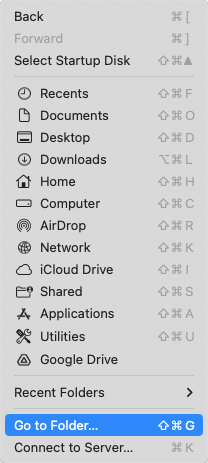
- A little window will pop up. Type
~/Library/Cachesinto it and hit Enter. You’re now in the cache folder.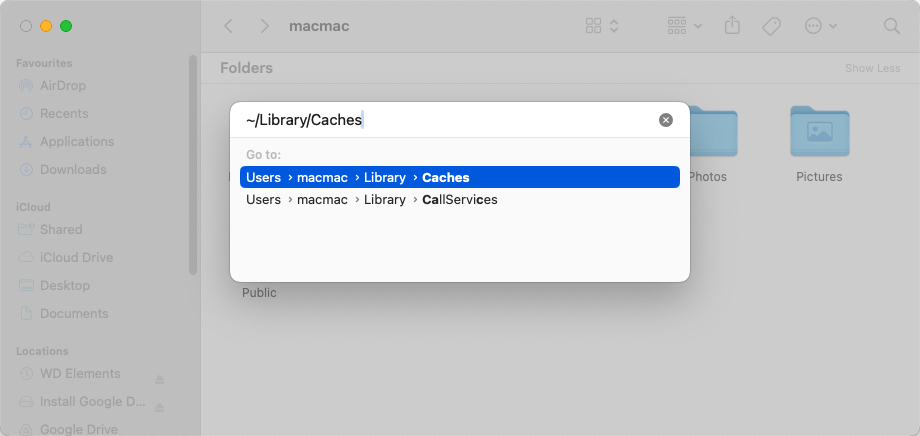
- Here you’ll see lots of folders named after apps. These are their cache stashes. You can open each one and delete the files inside. Just click on the files and drag them to your Trash.
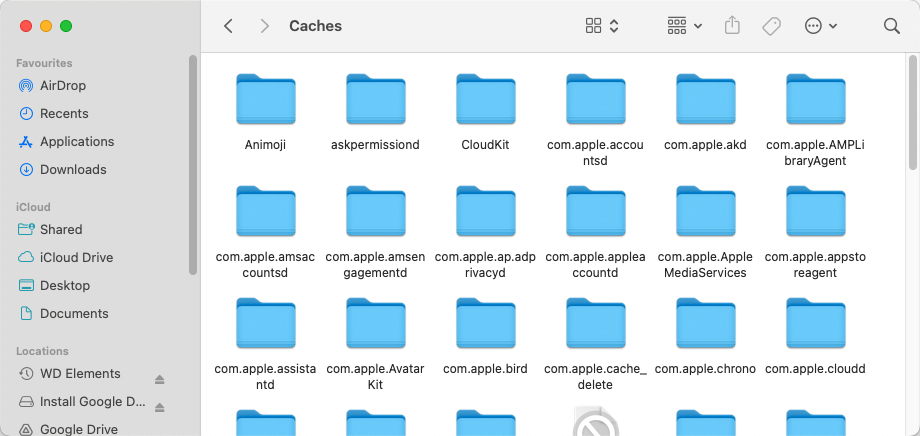
- And don’t forget, empty the Trash when you’re done to truly clear them off your Mac.
A little heads-up: clearing cache might make some apps load a bit slower the next time, just because they have to recreate those cache files. But, it’s usually a small price for reclaiming some space.
That’s it for clearing cache files! This simple step can help clean up system storage on Mac and might even make your Mac feel a bit snappier.
Method 2: Remove Log Files and System Junk
Just like cleaning out old cache files, getting rid of old log files and other system junk can help you reclaim some valuable space on your Mac. Log files record system events and app behaviors, which can be useful for troubleshooting but tend to accumulate over time.
Steps to Clean Out Log Files and System Junk:
- Open Finder, and just like before, click on ‘Go’ at the top, then select ‘Go to Folder’ from the dropdown.
- This time, type in
~/Library/Logsand press Enter. Welcome to the logs folder, where your Mac keeps a diary of its activities.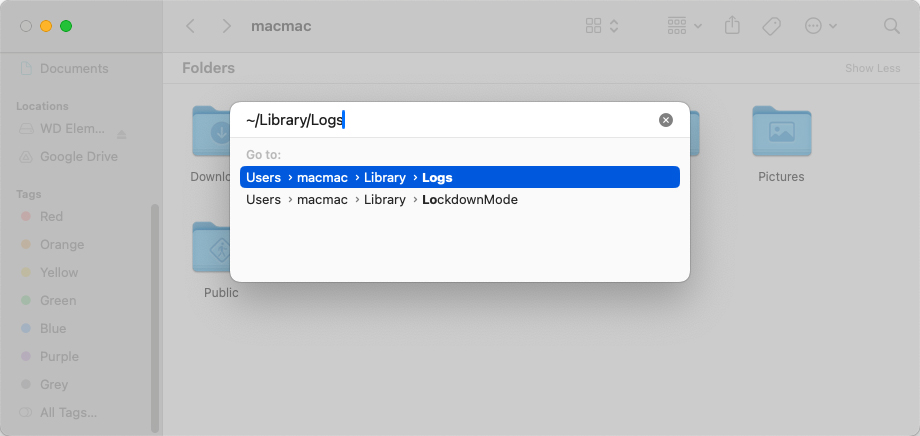
- You’ll see various log files here. Feel free to browse through and delete the ones that seem outdated or unnecessary. If a file was recently modified, it might still be in use, so consider keeping it just to be safe.
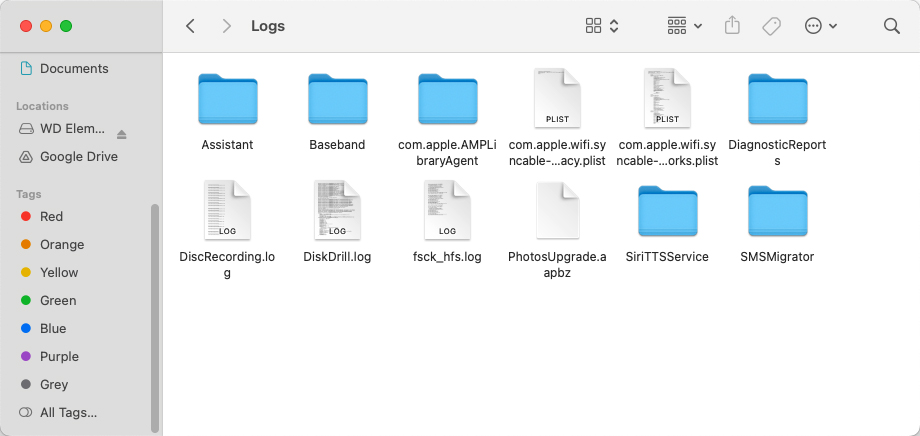
- Lastly, don’t forget to empty the Trash to complete the cleanup process and free up system data on Mac.
With log files and system junk out of the way, your Mac should have a bit more breathing room. Up next, we’ll look at how to delete unnecessary app data to further clear system data on macOS.
Method 3: Delete Unnecessary App Data
Apps on your Mac can accumulate data over time, from documents and user preferences to temporary files. While some of this data is essential for your apps to function correctly, there might be a lot that’s just taking up space without any real purpose. Let’s clean it up.
How to Remove Unneeded App Data:
- Start by opening Finder. Hit ‘Go’ in the menu and select ‘Go to Folder’ again.
- Type
~/Library/Application Supportand press Enter. This folder is like a storage unit for your apps, holding all sorts of data they need.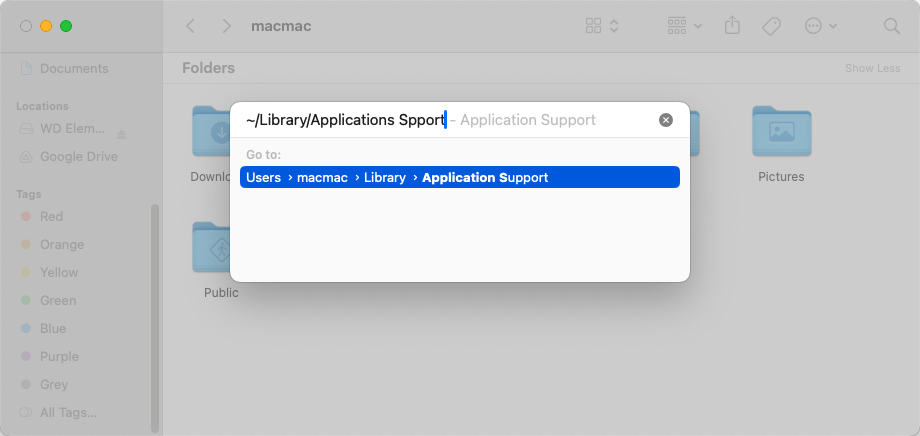
- Look through the folders here, each named after an app. If you see data from apps you no longer use or need, it’s safe to delete those folders.
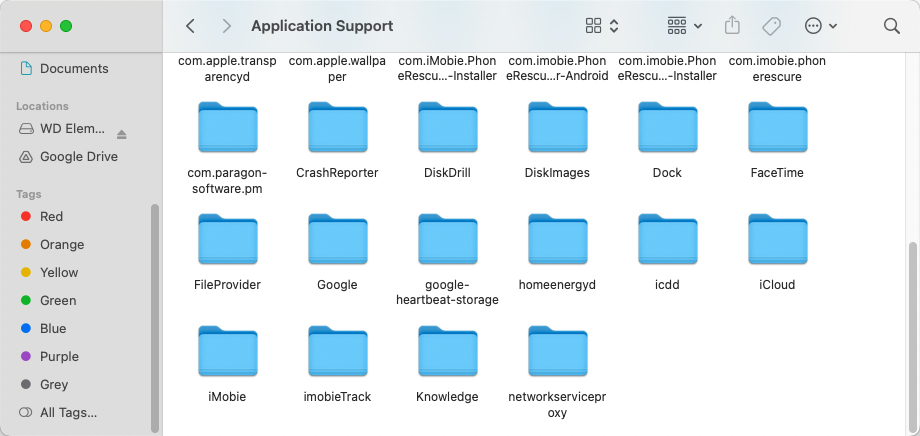
- Another spot to check is the
~/Library/Containersfolder. This is particularly useful for apps downloaded from the App Store. Follow the same steps: if there’s data from apps you don’t use anymore, you can delete those folders.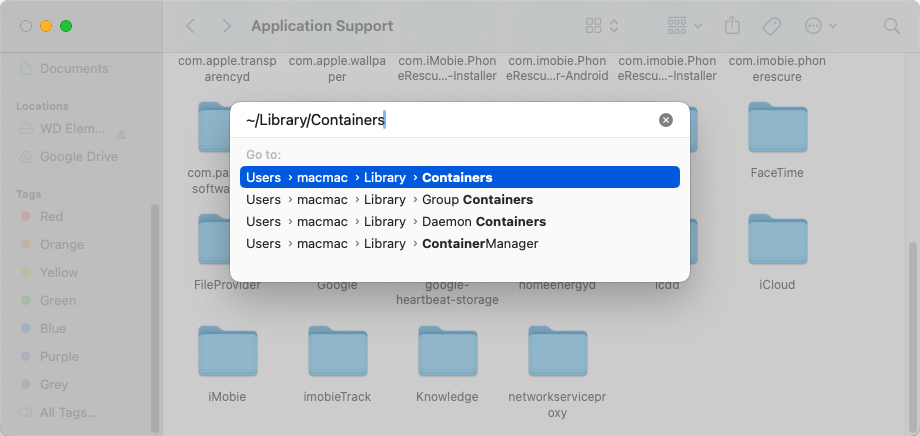
- As always, empty your Trash to wrap up the cleanup. This step finalizes the removal and frees up system data on Mac.
Be cautious with what you delete. If you’re unsure whether data is needed, it might be safer to leave it or back it up before deleting. Removing essential app data can lead to functionality issues or loss of important information.
Clearing out unnecessary app data can significantly reduce system data Mac users struggle with, especially if you’ve accumulated lots of files from various app installations over time. Ready for more space-saving tips? Stay tuned for our next method on using macOS’s own storage management tools.
Method 4: Use macOS Storage Management Tools
macOS comes with built-in tools that help manage and optimize your storage. These tools offer a variety of options to review, delete, or move files and apps you don’t need, helping to maintain a healthy amount of free space on your Mac:
- Click on the Apple logo in the top left corner of your screen and select ‘System Settings’.
- Go to the ‘General’ section and find the ‘Storage’ option.
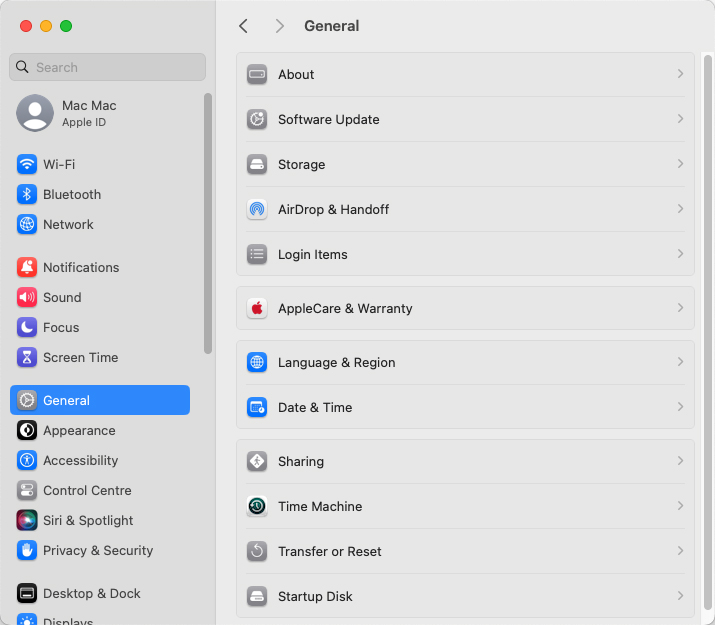
- In the storage management window, you’ll find recommendations for optimizing your storage, like enabling ‘Empty Trash Automatically’ or reviewing and deleting large files you might not need anymore.
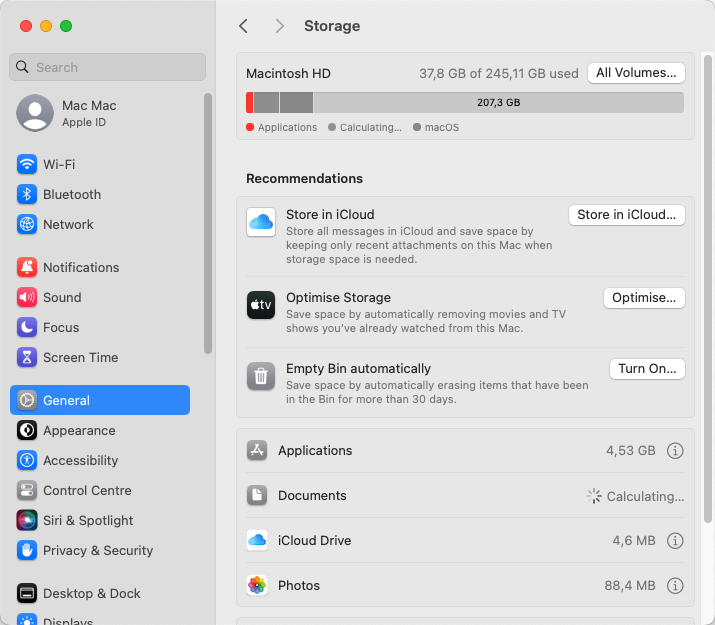
Keeping on top of your storage with macOS tools can help ensure your Mac stays fast and responsive. Up next, we’ll look into how third-party cleaning software can offer an even deeper clean for those looking to clear system data on Mac even further.
Method 5: Utilize Third-Party Cleaning Software
While macOS offers some solid tools for managing storage, sometimes you need a bit more power to dig deep and really clean out those digital cobwebs. That’s where third-party cleaning apps come into play. They can simplify the process, providing a thorough cleanup with minimal effort on your part. Here are a few trusted apps that can help you clean Mac system storage efficiently:
- CleanMyMac X: This app is a powerhouse when it comes to tidying up your Mac. CleanMyMac X scans your entire system and identifies junk files in every corner, from outdated caches and broken downloads to unnecessary logs and localization files. Its intuitive interface makes it easy to review what it finds and decide what to clean. Plus, its optimization and maintenance tools can help improve system performance, making it a go-to for those looking to clear system data on Mac
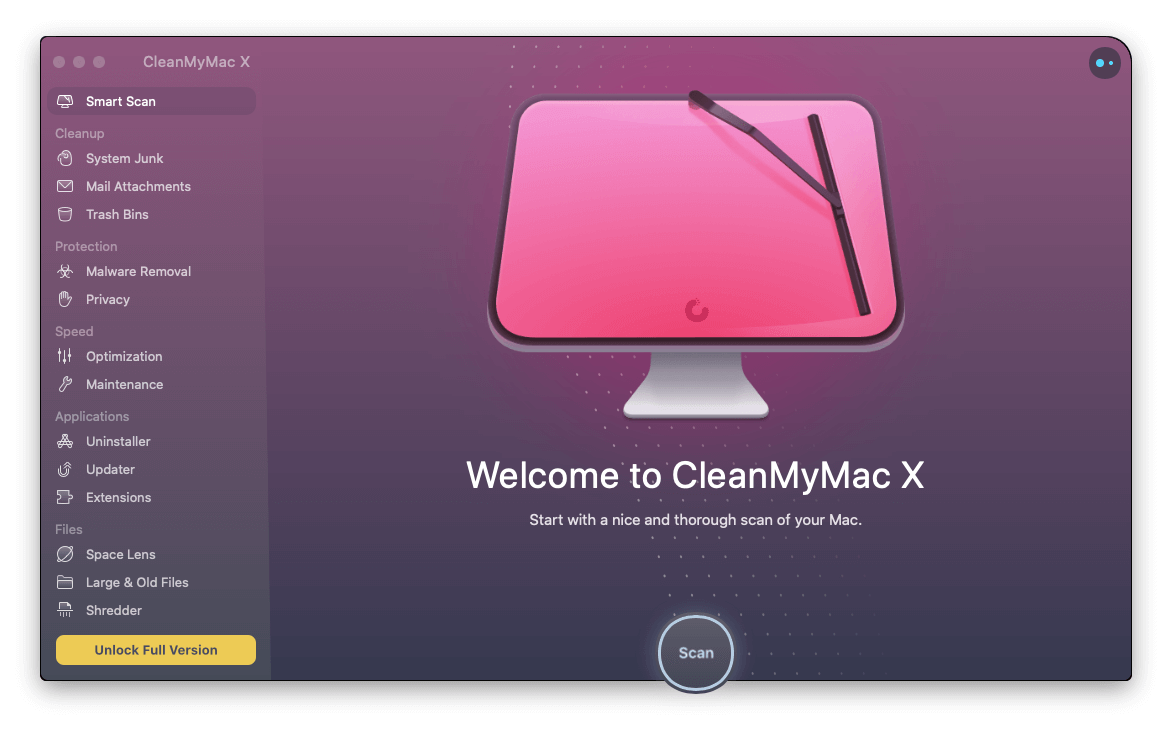
- DaisyDisk: DaisyDisk stands out with its unique, colorful disk space visualization, showing you exactly what’s eating up your storage at a glance. You can quickly find large files and folders you might have forgotten about and delete them right from the app. It’s perfect for visual learners and those who appreciate a graphical approach to clean system data mac.
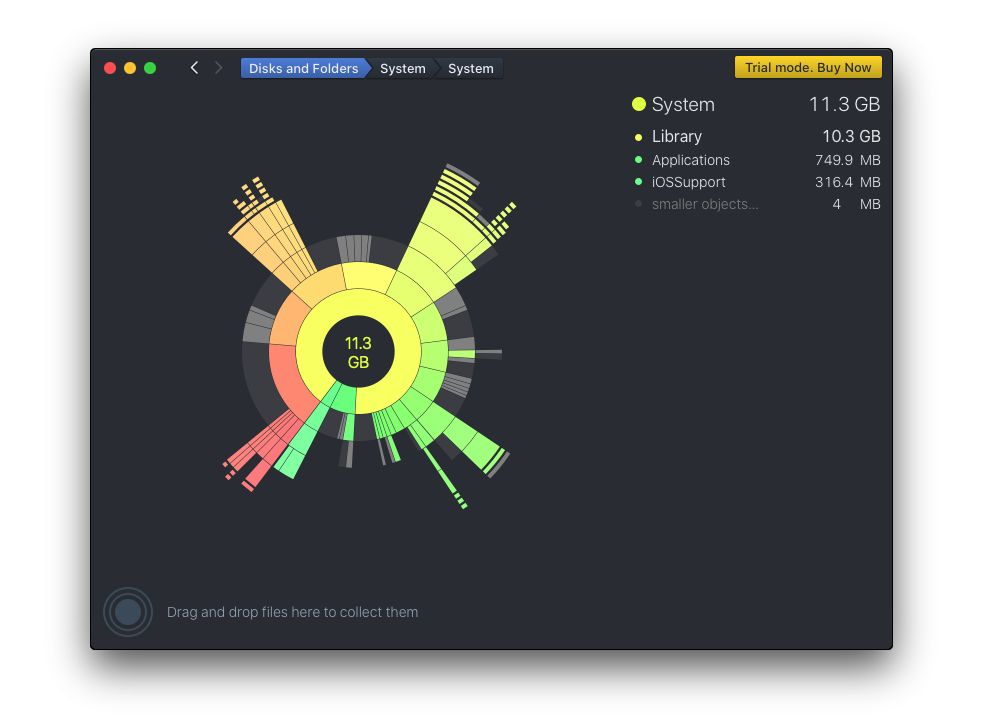
- OnyX: OnyX is for those who really like to get into the nitty-gritty of their system. It’s not just a cleaning tool; it offers a wide array of maintenance, optimization, and personalization features. While it might be a bit more complex, it’s incredibly thorough, giving you control over which files to clean, which scripts to run, and how to customize various macOS features. It’s a great choice for advanced users aiming to reduce system data on Mac.
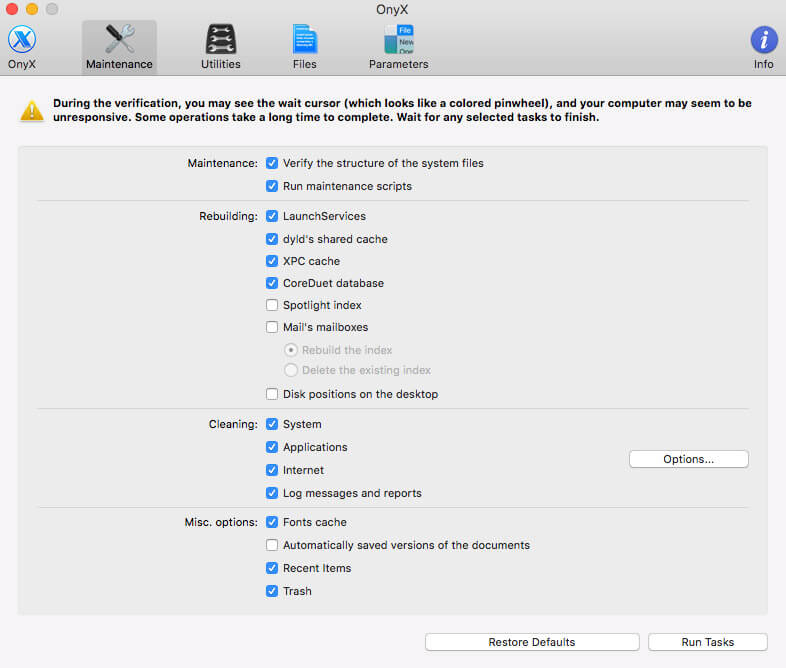
Each of these apps brings something unique to the table, from simple, one-click solutions to more detailed, customizable cleanups. Depending on your comfort level and what you’re looking to achieve, one of these could be the perfect tool for your Mac system storage cleanup.
Remember, when using third-party software, it’s always a good idea to download directly from the developer’s site or a trusted source like the Mac App Store to ensure you’re getting a safe, legitimate version of the app.
With these methods, you should be able to free up system data on mac and keep your device running like new. Just remember, when in doubt about what a file does, it’s best to leave it be or do a bit of research first.
Preventative Measures and Best Practices
Cleaning is one thing, but to avoid unnecessary system data buildup and the need to cleanup alltogether it’s important to adopt some proactive habits. These practices can help you manage and minimize system data accumulation, ensuring your Mac maintains its optimal performance over time.
- Regular System Cleanups: Set a schedule for routine check-ups of your system storage. Tools like described in this article can help you verify disk integrity and clean up system storage effectively.
- Manage Cache Files: Keep an eye on the cache files of frequently used applications. While caches speed up app loading times, they can grow large over time. Clearing these occasionally can free up system data on Mac.
- Limit Startup Programs: Too many programs launching at startup can eat into your system resources. Go to System Preferences > Users & Groups, and then click on Login Items to manage these applications.
- Streamline Storage: Utilize macOS’s Optimize Storage feature to automatically move older documents to iCloud and keep recent files on the local disk, helping to clean Mac system storage.
- Audit Installed Applications: Regularly review the applications you have installed and remove those that are no longer needed. Each application can contribute to system data through cache files, logs, and more.
By implementing these strategies, you not only reduce system data Mac devices accumulate but also enhance the overall efficiency and lifespan of your Mac. A mindful approach to what gets stored and what runs on your Mac can significantly impact its performance and storage health.
Embracing these best practices will guide you in maintaining a clean and efficient Mac, making concerns about how to clear system data on Mac less frequent and more manageable.
Conclusion
And there you have it—a deeper dive into the rarely seen parts of your Mac’s storage, now cleaner than ever. Embracing these cleanup methods and best practices can transform the way your Mac performs and how you maintain it. We hope that with better understanding your device it will serve you well for years to come. With this newfound knowledge, you’re well-equipped to keep your Mac in tip-top shape, making system storage buildup into a rare sight.













